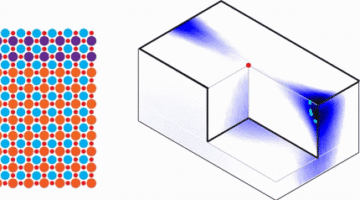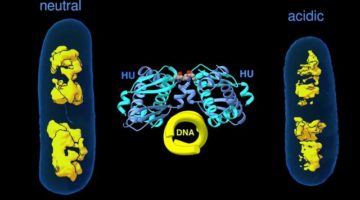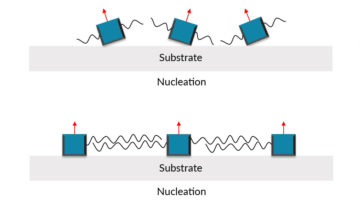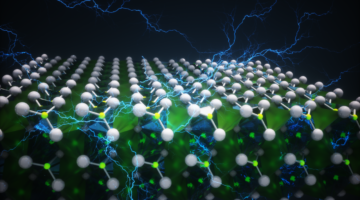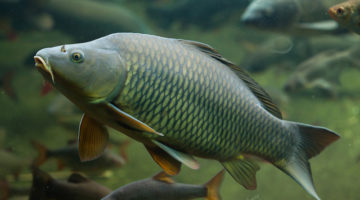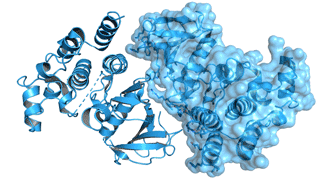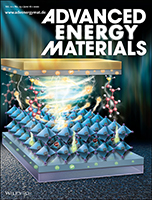Researchers discovered two unique electronic properties—a Van Hove singularity and Fermi surface topology—at the interface between atomically thin oxide materials. The results suggest that the system is an ideal platform for investigating how to control superconductivity at the atomic scale in 2D materials. Read more »
Crystal structure of the catalytic subunit of bovine pyruvate dehydrogenase phosphatase
The crystal structure of the catalytic subunit of bovine pyruvate dehydrogenase phosphatase provides new insights into the mechanism of the regulation of the activity of the pyruvate dehydrogenase complex. Read more »
Study Gains New Insight Into Bacterial DNA Packing
When bacteria are put in different environments, their genes start to adapt remarkably quickly because the proteins making up their chromosomes can pack and unpack rapidly. Researchers have now imaged this process at the molecular level, a discovery that could eventually enable scientists to develop strategies to control microbial behavior. Read more »
This Enigmatic Protein Sculpts DNA to Repair Harmful Damage
Scientists have discovered that a DNA-repairing protein performs its functions by first marking and then further breaking damaged DNA. The surprising findings have provided much-needed insight into how DNA repair works in healthy human cells, as well as how different mutations can translate into different diseases and cancer. Read more »
Long Chains Stabilize Higher-Efficiency Solar Cells
Perovskite thin films have many attractive properties for use in photovoltaics, but their assembly into practical devices has led to trade-offs between efficiency and stability. The addition of surfactant-type molecules with hydrophobic chains helped produce perovskite solar cells that are both efficient and stable. Read more »
ALS in the News (June 2020)
-
-
- This enigmatic protein sculpts DNA to repair harmful damage
- Off the scales: Fish armor both tough and flexible
- Showtime for photosynthesis
- New awards to enable experimental leaps in quantum materials
- Accelerator facilities support COVID-19-related research
- Antibody preventing COVID-19 found, on accelerated track to trials
- 10 lithium-ion battery researchers to watch
-
Unexpected Rise in Ferroelectricity as Material Thins
Researchers showed that hafnium oxide surprisingly exhibits enhanced ferroelectricity (reversible electric polarization) as it gets thinner. The work shifts the focus of ferroelectric studies from more complex, problematic compounds to a simpler class of materials and opens the door to novel ultrasmall, energy-efficient electronics. Read more »![]()
![]()
Off the Scales: Fish Armor Both Tough and Flexible
Humans have drawn technological inspiration from fish scales going back to ancient times: Romans, Egyptians, and other civilizations would dress their warriors in scale armor, providing both protection and mobility. Now, scientists have characterized carp scales down to the nanoscale, enabling them to understand how the material is resistant to penetration while retaining flexibility. Read more »
On-Off Switch for Regulating Tumor-Cell Growth
The mechanisms that affect the regulation of cell growth in certain tumor cells were revealed by a Genentech study of enzyme structures, conducted in part at the ALS. The work establishes a framework for the rational discovery of new therapeutics to improve upon currently existing treatments for certain cancers. Read more »![]()
![]()
Energetics and Energy Loss in 2D Ruddlesden–Popper Perovskite Solar Cells
Qinye Bao and co‐workers systematically investigate the energetics and energy loss in 2D Ruddlesden‐Popper perovskite (RPP) solar cells. The crucial scenario found at the 2D RPP/electron transport layer interface is that the potential gradient across ligands promotes separation of the photogenerated carrier, with electrons transferring from the perovskite crystal to the electron transport layer. Read more »
- « Previous Page
- 1
- …
- 42
- 43
- 44
- 45
- 46
- …
- 83
- Next Page »
